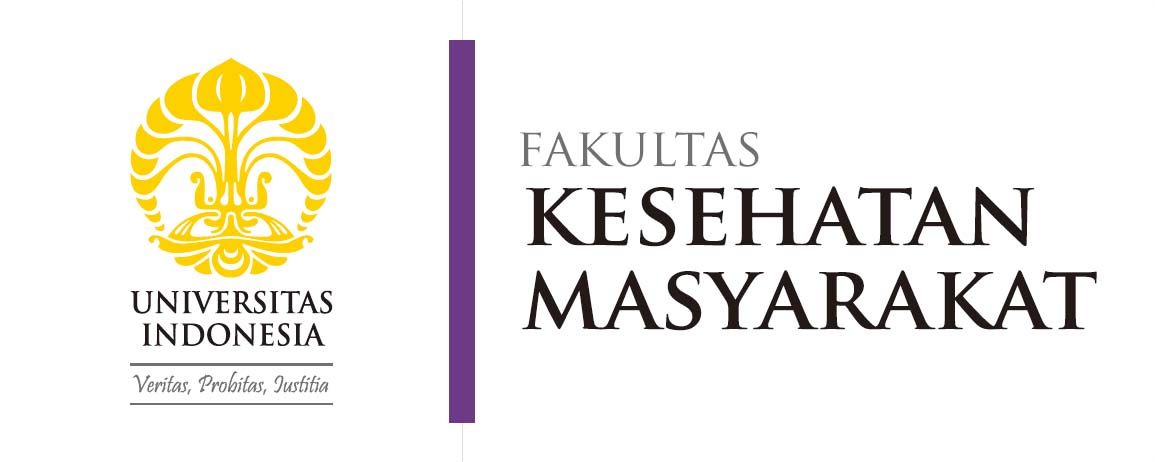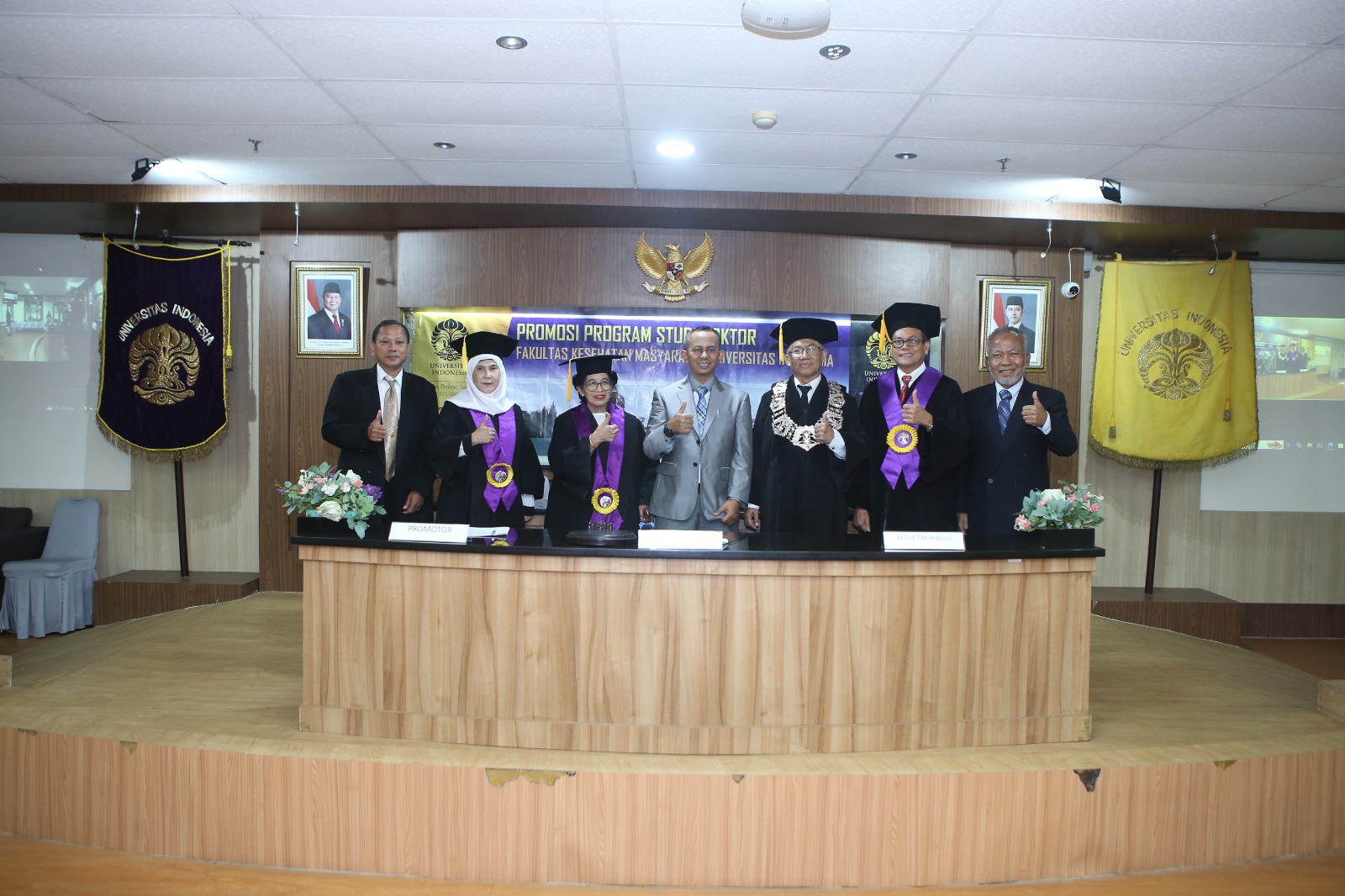The Faculty of Public Health (FPH) of the Universitas Indonesia (UI) held an open session for the Doctoral Promotion in Epidemiology with Promovendus Harisnal on Monday, January 9, 2025, at the FPH UI Doctoral Promotion Room. The session was led by the Dean of FPH UI, Prof. dr. Mondastri Korib Sudaryo, M.S., D.Sc., with Promotor Prof. Dr. dr. Ratna Djuwita, M.P.H., and Co-promotors Dr. dr. Tri Yunis Miko Wahyono, M.Sc., and Prof. Dr. Dra. Dewi Susanna, M.Kes. The examiners included Prof. Dr. Besral, S.K.M., M.Sc., Prof. Dr. Ririh Yudhastuti, drh., M.Sc., Dr. Suwito, S.K.M., M.Kes., dr. Syahrizal Syarif, M.P.H., Ph.D., and Dr. Pujiyanto, S.K.M., M.Kes. Harisnal successfully defended his dissertation titled “Monitoring Model for Dengue Fever Larvae with the Implementation of the One House One Larvae Monitor (G1R1J) Plus Student Larvae Monitors (Sismantik) in Pariaman City, West Sumatra.”
Dengue fever (DBD) is an infectious disease caused by the dengue virus and transmitted to humans through the bite of Aedes aegypti or Aedes albopictus mosquitoes (WHO & TDR, 2009). DBD is a contagious disease that has occurred in nearly all countries in recent years. The incidence of DBD has increased by 30 times over the past 50 years. It is estimated that there are 50 to 100 million cases of DBD in more than 100 endemic countries each year, with almost half of the world’s population at risk of contracting DBD (WHO, 2024).
In West Sumatra, especially in Pariaman City, the One House One Larvae Monitor (G1R1J) movement has been implemented based on the Mayor of Pariaman’s Decree Number: 124/440/2018 on the Appointment of Supervisors and Coordinators for the Prevention and Control of DBD with the G1R1J Program for the period 2018 to 2023 (West Sumatra Provincial Health Office, 2020). However, there are several challenges in its implementation, including the still high presence of mosquito larvae as measured by the Container Index (CI).
An area is considered to be at high risk for DBD transmission if the CI ≥ 5% or the Larvae Free Rate (ABJ) ≤ 95% (Perwitasari et al., 2018). The vector density for DBD in Pariaman City still exceeds the established standard, with a CI > 5%, where the average ABJ in Pariaman City in 2021 was only 55%, far below the national standard of 95% (West Sumatra Provincial Health Office, 2021). This mixed-methods research used both qualitative and quantitative approaches. The quantitative approach employed a quasi-experimental study design with a control group, while the qualitative approach used a Rapid Assessment Procedure (RAP) design with in-depth interviews and Focus Group Discussions (FGD).
This research offers a significant novelty in terms of monitoring DBD larvae. It integrates the role of students as larvae monitors, or Sismantik, as household-based Jumantik in the G1R1J program along with their mothers and schoolteachers in larvae monitoring activities, reporting, and eliminating larvae. It also analyzes the effectiveness of this Sismantik intervention in both the intervention and control groups.
The first phase of the research involved in-depth interviews and FGDs with Program Officers, G1R1J cadres, Jumantik cadres, and cross-sector stakeholders, producing nine themes: (1) Human resources for G1R1J cadres, (2) Training for G1R1J cadres, (3) Commitment in recruiting cadres, (4) The role of Student Larvae Monitors (Sismantik), (5) Funding for G1R1J activities, (6) Availability of tools and supporting facilities, (7) Cadre mentoring processes, (8) Rules regarding rewards and sanctions for achieving program targets, and (9) Achievement of larvae monitoring targets (CI).
Based on the qualitative findings, a training module for Student Larvae Monitors (Sismantik) was developed. Meanwhile, quantitative data were collected through questionnaires to assess knowledge, attitudes, and practices, as well as observations to measure mosquito larvae density through the Container Index (CI).
This research examined the impact of the Sismantik education program on community knowledge, attitudes, and practices to prevent the spread of diseases caused by mosquito larvae. Data were collected through questionnaires and observations to assess knowledge, attitudes, actions, and larvae density in the environment.
The results showed that in the intervention group, knowledge increased significantly from 55.4% to 91.7%. This improvement was statistically significant (p < 0.001). Respondents’ attitudes also increased from 78.8% to 85.8%, although this increase was slightly smaller than that in knowledge. Preventive actions taken by respondents increased dramatically, from 48.9% to 83.7%, with a greater increase than in the control group.
The reduction in larvae density, measured by the Container Index (CI), was also better in the intervention group, with significant results from the second to the fourth measurements. Before the intervention (in August), there was no significant difference between the intervention and control groups.
Overall, the intervention was effective in improving knowledge, attitudes, and actions among the community, as well as in reducing larvae density in their environment. Higher levels of education also played a role in reducing CI.
Based on these research findings, Harisnal recommended to the Ministry of Health of the Republic of Indonesia and the Provincial and District/City Health Offices that the community-based Sismantik approach to monitoring DBD larvae is crucial to implement. G1R1J can be strengthened by incorporating the role of Sismantik at the household level, involving mothers and children as household Jumantik, and providing ongoing training for Sismantik and G1R1J cadres to improve knowledge and competencies.
Moreover, commitment is needed in the form of a statement of willingness to become a G1R1J cadre, along with regular mentoring by healthcare workers from the community health centers (puskesmas) and community leaders. Cross-sector collaboration, including between the Health Office, the Education Office, and local governments, should also be enhanced to ensure the success of the G1R1J Plus Sismantik program implementation. These actions are essential for reducing vector density (CI) and decreasing the incidence of DBD. (prom)

